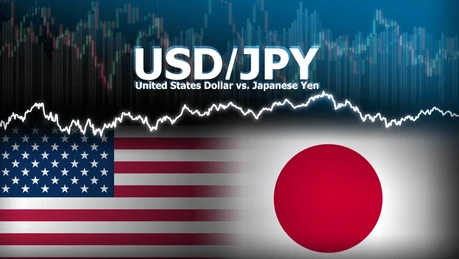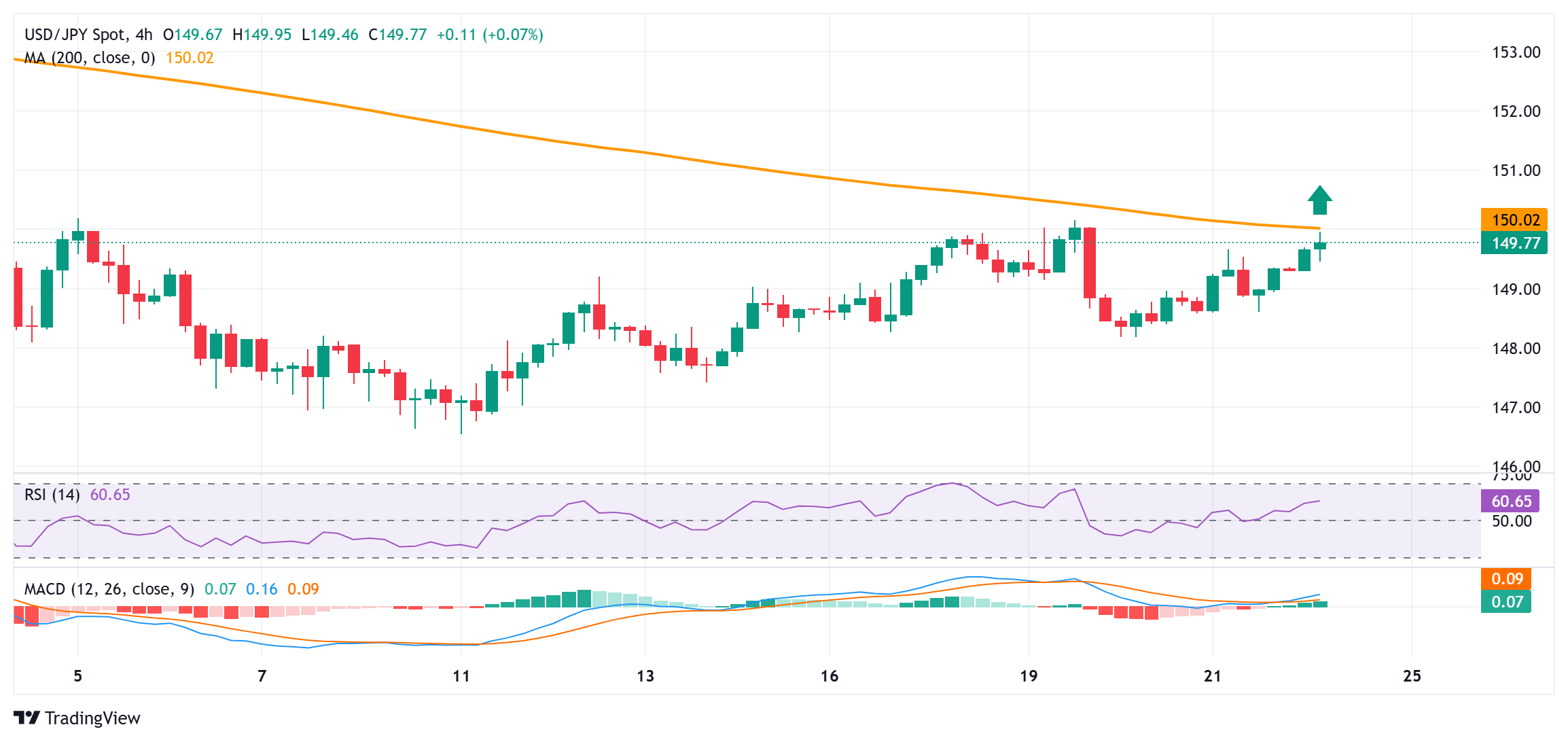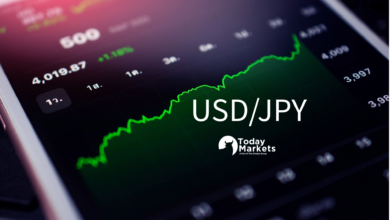USD/JPY remain depressed amid positive risk tone; hawkish BoJ expectations could limit losses

- The Japanese Yen drifts lower against the USD for the third successive day on Monday.
- Weaker Japanese PMIs and a positive risk tone seem to weigh on the safe-haven JPY.
- The divergent BoJ-Fed policy expectations could cap any further gains for USD/JPY.
The Japanese Yen (JPY) retains its negative bias through the Asian session on Monday in the wake of the disappointing release of Japan’s March Purchasing Managers’ Index (PMI). Apart from this, a generally positive tone around the equity markets is seen as another factor undermining the safe-haven JPY. This, along with a modest intraday US Dollar (USD) uptick, lifts the USD/JPY pair back closer to the 150.00 psychological mark.
Any meaningful JPY depreciation, however, still seems elusive amid the growing acceptance that the Bank of Japan (BoJ) will hike interest rates further, bolstered by expectations that strong wage growth could filter into broader inflation trends. This marks a big divergence in comparison to the Federal Reserve’s (Fed) forecast for two 25 basis points rate cuts in 2025, which should support the lower-yielding JPY and cap the USD/JPY pair.
Japanese Yen sticks to weaker PMI-inspired losses amid a positive risk tone
- According to the preliminary estimates released earlier this Monday, the Au Jibun Bank Japan Manufacturing PMI declined from 49.0 in the previous month to 48.3 in March 2025. This marks the lowest reading since March 2024 and a ninth straight month of contraction.
- Adding to this, the service sector, which had been a bright spot in Japan’s economy, also lost momentum and contracted for the first time in five months. Furthermore, the overall business outlook slipped to the lowest since August 2020, which is seen weighing on the Japanese Yen.
- Reports over the weekend indicated that Trump is planning a narrower, more targeted agenda for the so-called reciprocal tariffs set to take effect on April 2. This fuels hopes for less disruptive Trump tariffs and boosts investors’ confidence, further undermining the safe-haven JPY.
- Results from Japan’s annual spring labor negotiations revealed that firms agreed to union demands for strong wage growth for the third straight year. Moreover, inflation in Japan remains above the central bank’s 2% target and keeps the door open for more rate hikes by the Bank of Japan.
- Moreover, BoJ Governor Kazuo Ueda said last week that the central bank wants to conduct policies before it is too late. Ueda added that achieving a 2% inflation target is important for long-term credibility and the BoJ will keep adjusting the degree of easing if the outlook is to be realized.
- BoJ Deputy Governor Shinichi Uchida said that the central bank will adjust the degree of monetary easing by raising policy rates if the economic and price outlooks are to be achieved. The BoJ will continue to assess economic and financial market situations at home and abroad, he added.
- Meanwhile, the Federal Reserve gave a bump higher to its inflation projection, though maintained its forecast for two 25 basis points rate cuts by the end of this year. This keeps a lid on the recent US Dollar recovery from a multi-month low and should cap the upside for the USD/JPY pair.
- Traders now look forward to the release of flash US PMIs, which, along with speeches by influential FOMC members, could provide some impetus. The focus, however, will be on the release of the Tokyo CPI and the US Personal Consumption Expenditure (PCE) Price Index on Friday.
USD/JPY bulls await move beyond 150.00, 200-period SMA on 4-hour chart

From a technical perspective, the USD/JPY pair needs to break out above the 200-period Simple Moving Average (SMA) on the 4-hour chart – levels just above the 150.00 psychological mark – for bulls to retain short-term control. Given that oscillators on the daily chart have just started gaining positive traction, the subsequent move-up might then lift spot prices to the 151.00 mark en route to the monthly peak, around the 151.30 region.
On the flip side, the Asian session low, around the 149.30 area, might now protect the immediate downside ahead of the 149.00 mark. This is followed by the 148.60-148.55 support, which if broken decisively could make the USD/JPY pair vulnerable to accelerate the fall towards last week’s swing low, around the 148.28-148.15 area en route to the 148.00 mark, and the 147.75 horizontal support. Some follow-through selling could pave the way for a slide towards the 147.30 region before spot prices eventually drop to the 147.00 mark and the 146.55-146.50 area, or the lowest level since early October touched earlier this month.





